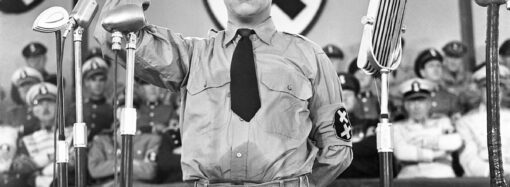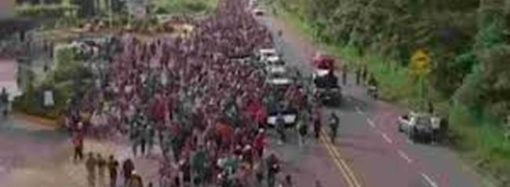Opinion Editorial
January 14, 1998
By Stephen R. Mueller
The Colorado Department of Transportation (CDOT) recently organized a series of “public” meetings about the weekend traffic congestion on Interstate-70 west of Denver. The so-called solution? A new high-tech magnetic levitation train that would be built along and above the existing highway from Denver to Vail.
The outcome of the meeting was more than predictable. The consulting firm which ran the meetings for CDOT had given money to Transit 97, a group that pushed rail as the solution to Denver’s traffic congestion woes. The participants at the “public” meeting were heavily weighted toward a rail solution – and included many Transit 97 contributors and campaign officers.
Unfortunately for taxpayers, the economics of passenger rail service along the I-70 corridor are terrible. The cost is projected to be $4.4 billion dollars — more than $1,100 for every man, woman and child in Colorado.
The plan will have an extremely limited impact on traffic congestion. The CDOT consultant claims about 12% of the corridor’s passenger volume would be on the train. If the consultant’s estimate were true, then the peak-hour passenger volume for the train would be only about 900 people. It should be obvious that 900 people per hour can’t financially support a $4.4 billion dollar train. So just like the current RTD system, the “Rail to Vail” would have to be heavily subsidized.
I am amazed that Governor Romer and his CDOT Director would support a plan that is projected to cost more than $4.4 billion, but will only serve (maybe) several thousand people on any given weekend. After their earlier announcement supporting light rail to the Denver Tech Center, I can’t help but ask the question: have they given up on our highway system? Do they only want to support big, government-run train systems at the expense of our over-crowded and deteriorating highways? Why can’t Colorado start devoting the resources that are needed to solve the highway problems instead of looking for pipe-dream solutions to traffic congestion?
My family enjoys skiing in the Colorado high country, and we typically patronize one of the Summit County resorts. We recognize that traffic congestion is a problem on the I-70 corridor due to the number of skiers, like us, that enjoy some of the best snow on earth. What is normally an hour and fifteen minute trip can easily turn into two hours or more during the peak travel times. It can even become a longer trip in bad weather, but it isn’t so terrible as to make us want to leave our car at home and take a bus — or the train. Why? It is cheaper to drive.
I spent $18.00 to fill the family car’s gas tank for last weekend’s ski trip to Copper Mountain. There were four skiers in the car, and we returned to Denver with more than half a tank of gas. An advocate of the Rail to Vail train said on television that he expected train fares to be about $20.00 per person round trip. In other words, the four people in my car would have been charged a total of $80.00 for riding the train, instead of riding in my car for less than $10.00 in gas. It would not be rational to ride the train at that cost.
But there is more irrationality to the economics of the Rail to Vail plan. The $20.00 fare is much lower than the privately operated Ski Train to Winter Park. Do these rail advocates suggest that they can construct and operate a public rail system better than the private sector? Will we use tax dollars to compete unfairly with the existing private rail service and force the Ski Train to Winter Park out of business?
The $20.00 fare projection is also ridiculously low when it is compared to Denver’s existing light rail operating costs. The RTD rail carries far more passengers than the Rail to Vail could ever hope to carry — and RTD farebox revenues support only 10% of the RTD’s costs. Rail to Vail fares will have to be much larger than its promoters are willing to admit. Of course, the higher fares will mean lower ridership on the government-run system.
Not only will it be cheaper to drive; it will also be quicker. The problem with the consultant’s time estimates are that they don’t include the total travel time experienced by individuals. The consultant has calculated the time it takes for the train to travel along the projected train route, which doesn’t include the time it takes to travel from my home to the station, park the car, buy tickets, and then wait for the train. Remember how the airlines ask passengers to arrive an hour before flight time? I really dislike waiting for buses and trains at a station. I’d rather be on the move in the safety, security, and comfort of my own car, even if it is moving at a slower than normal pace. On a good day, I’m pretty sure I could drive my family to Summit County from my home quicker than even the most high-tech train could get my family there — and I know I can get there cheaper.
Will most visitors to Summit County and Vail rationally decide to spend lots of money on the train, or will they go elsewhere to ski? If the roadway congestion becomes too severe, many families will make decisions to ski less often in Summit County and instead travel to Steamboat or Crested Butte for several consecutive days of skiing in a row — or perhaps they will completely forego skiing in Colorado.
Some might think that Summit County businesses and ski areas will be the ultimate losers if we don’t start to plan for a real solution to the traffic issues on I-70 west. The reality is that if $4.4 billion dollars is redirected away from our highways, everyone in Colorado will lose. The “Rail to Vail” proposal isn’t a viable solution for I-70 west, or for Colorado.
Steve Mueller is a Senior Fellow in the Transportation Policy for the Independence Institute, a free-market think tank in Golden, He was the 1993 Engineer of the Year for the Colorado Chapter of the American Public Works Association.
This article, from the Independence Institute staff, fellows and research network, is offered for your use at no charge. Independence Feature Syndicate articles are published for educational purposes only, and the authors speak for themselves. Nothing written here is to be construed as necessarily representing the views of the Independence Institute or as an attempt to influence any election or legislative action.
Please send comments to Editorial Coordinator, Independence Institute, 14142 Denver West Pkwy., suite 185, Golden, CO 80401 Phone 303-279-6536 (fax) 303-279-4176 (email) webmngr@i2i.org
Copyright 2000







